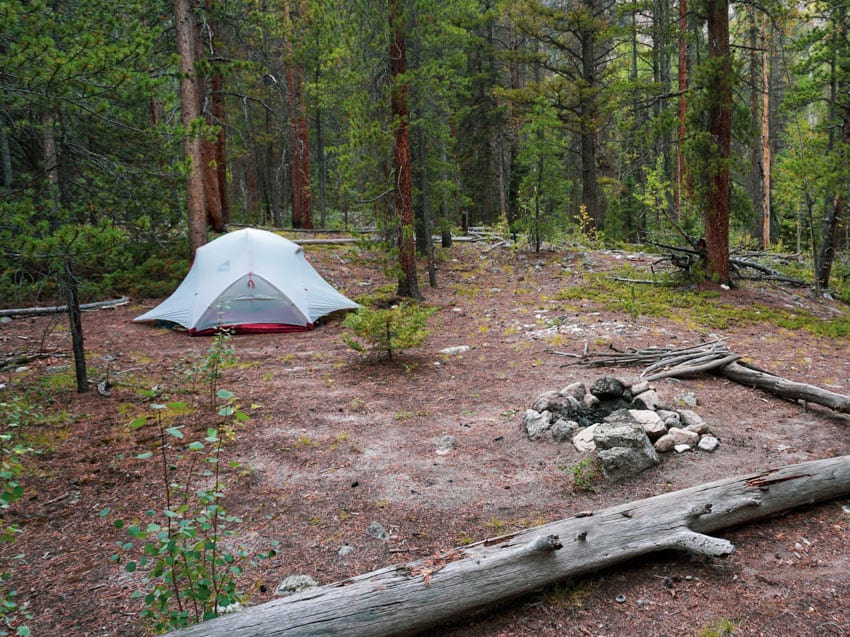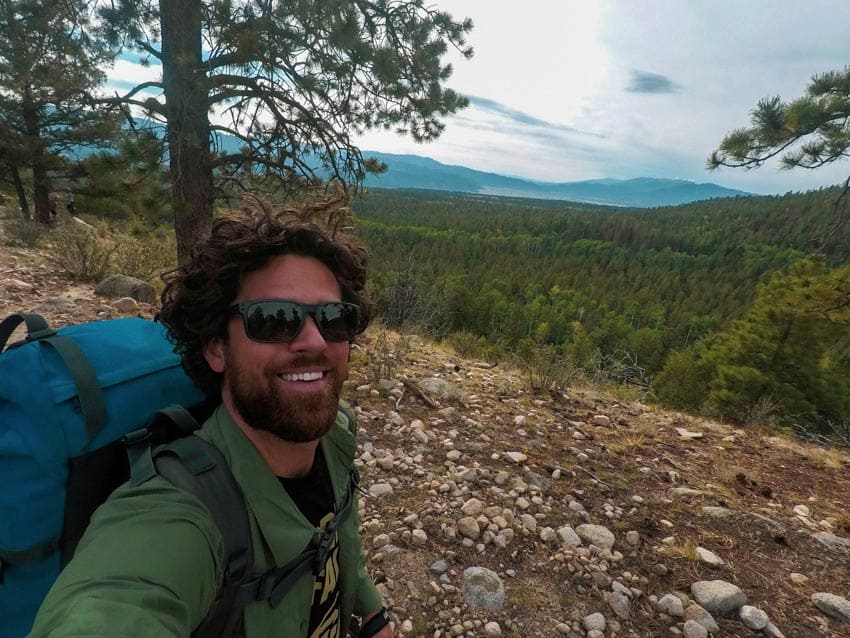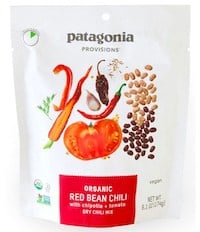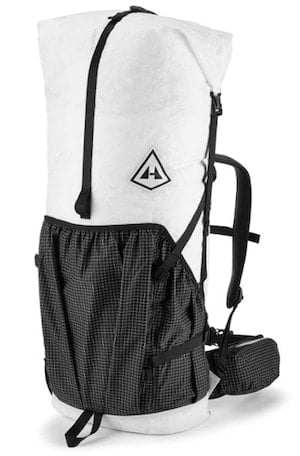There’s nothing quite like setting off into the wilderness for a few days knowing that you’re carrying all the backpacking essentials on your back.
Backpacking is a mix of backcountry camping and hiking. No car noise; no people noise; just you, your survival essentials, and nature.
It’s our favorite way to get away from it all and relax in the great outdoors!
Learn from our experience and check out this list of the best backpacking gear, what you actually need to pack, and what stuff would just be nice to have if you don’t mind the extra weight.
In this post, we cover all the backpacking essentials you’ll need to have an awesome outdoor adventure! It’s the perfect backpacking checklist for beginners ready to get out there and explore.
JUMP TO:
- The Ten Essentials
- Essential Backpacking Gear
- Cooking & Food
- Clothing
- Toiletries
- Emergency Items
- Optional Backpacking Gear
This post contains affiliate links. This means we may earn a commission at no cost to you for purchases made through these links.
The Ten Essentials
Our backpacking essentials are based on The Ten Essentials. It’s a list of equipment created by expert mountaineers to help other outdoor enthusiasts survive in an emergency and safely spend a night outside.
The Ten Essentials:
- Navigation
- Headlamp
- Sun protection
- First aid
- Knife
- Fire
- Shelter
- Extra food
- Extra water
- Extra clothes
The first seven will pretty much be the same equipment on each backpacking trip, with the exception of maps, because they vary by area.
Meanwhile, the amount of food, water, and type of clothing will need to be adjusted based on location, hike length, and climate. For example, you need more drinking water on a desert backpacking trip, than in an area near freshwater sources, like Red Feather Lakes.
Essential Backpacking Gear

Backpacking Pack
The #1 backpacking essential is a backpack! You definitely need a pack to carry all your other backpacking essentials in.
But how big of a backpack do you need? Well, that depends on trip length, climate, and how much weight you want to carry.
Ultralight backpackers are minimalists that carry as little as under 10 pounds of gear and stick to small, light packs to increase their speed and hiking distance. They count every ounce and some go so far they even cut off the handle of their toothbrush to skim off some weight.
At the other extreme, are the weekend backpackers with 70+ liter bags that bring along an array of kitchen gear for gourmet backcountry cooking, a coffee maker, chairs, and a table.
Neither is necessarily better than the other. It’s more about figuring out what fits YOUR needs best.
We prefer going lighter weight. I use a 36-liter pack and Michael has a 50 liter. They both have waist belts to help balance out the weight properly. My Osprey backpack has a built-in rain cover (which I love) and a lifetime guarantee. Michael is hoping to upgrade his secondhand pack soon and wants to get the water-resistant and minimalist Hyperlite pack below.
Backpacking Tent
The type of shelter you choose for your backpacking trip is entirely up to you. Most backpackers use a lightweight tent, but many others rely on a bivy tent, hammock tent, or tarp for shelter.
We use a 2-person ultralight backpacking tent by MSR that has 2 doors, 2 vestibles for covered storage, weighs less than 4 pounds, and is suitable for use in 3 seasons.
It’s super easy to set up and is freestanding. Meaning that it doesn’t have to be staked down to function. This allows for use on large boulders where it would be impossible to hammer in stakes.
It also comes with a removable rain fly that you can leave off for sleeping beneath the stars while staying shielded from mosquitoes (my favorite setup). With the rain fly on, you have two large side-entry vestibules to store gear and shoes while you sleep.
The footprint that goes underneath the tent provides another layer of protection from water and rocks.
We’ve used this tent in rain, hail, wind, and sun, and we really love it! It’s perfect for backpacking couples.
MSR Hubba Hubba NX 2-Person Backpacking Tent

Sleeping Pad
Sleeping pads are not just for comfort. Their most important role is actually keeping you warm at night by providing insulation between your body and the cold ground. They also double as a seat during the day.
A sleeping pad’s insulating power is measured by its R-value. The higher the R-value the warmer it’ll keep you.
The most popular types used for backpacking are closed-cell foam pads, air pads, and self-inflating pads.
Accordion-style, closed-cell foam sleeping pads, are far less expensive, more durable, and lightweight. But they take up more space than air pads and have lower R-values.
We use air pads because they’re much more compact – about the size of a reusable water bottle – and have higher R-values.
I (Kristina) use a women-specific version of Therm-a-Rest’s NeoAir sleeping pad because it’s smaller (I’m 5’4”) and warmer (5.4 R-value). Perfect for us short, cold sleepers! Michael uses the Klymit Insulated Static V, one that is highly rated and loved by many people.
After several trips, I realized I just can’t sleep without a pillow. Now I pack a tiny inflatable camping pillow which stuffs into my sleeping pad’s bag. Another option is to use your puffy jacket as a pillow to save space.
Sleeping Quilt
Although a sleeping bag works just fine, quilts are our preferred sleeping system for lightweight backpacking. Quilts remove the backside of the sleeping bag, saving weight and size without compromising insultation.
They make plenty of 1-person quilts, but we wanted an option to sleep together on our backpacking trips, instead of in two separate sleeping bags.
I like it mostly because I get to steal his heat at night!
Quilts are basically fluffy down blankets with a foot box and folded-over edges that slip over your feet and sleeping pad. Many feature a method to attach to your sleeping pad so there is a full seal around your body.
They are super comfy and make you feel more like sleeping in a real bed. They’re also a great choice for people who toss and turn in their sleep because they’re not as constraining as mummy bags.
Whatever you choose, make sure to get a bag or quilt that can keep you warm well below the coldest temperature in the area you’re hiking to.
Therm-a-Rest Vela 2-Person Puffy Down Camping Quilt

Check Price: Amazon (20-degree limit) | REI (32-degree limit)
Trekking Poles
Although we rarely use trekking poles while hiking, we’ve found them to be extremely useful for backpacking. That extra weight on your back can really throw off your balance!
Trekking poles have saved us from falling over many times (especially while hiking through The Narrows in Zion) and make hiking up steep inclines with backpacks so much easier.
We both have collapsible trekking poles that store quickly on the outside of our packs when not in use.
I use these lightweight carbon fiber poles with cork grips that mold to your hands and weigh in at just 7. 8 oz. per pole.
Michael uses the aluminum trekking poles that are a few ounces heavier than mine (9.6 oz per pole) but are more durable than carbon fiber AND come with a lifelong replacement promise by Montem.
They both come with interchangeable tips so you can use them on sand, snow, mud, and rocky terrain.
Montem Ultra Strong Trekking Poles

Check Price: Amazon
Headlamp
Headlamps are ideal for backpacking because they keep your hands free while providing much-needed illumination once the sun goes down. Washing dishes is a million times easier with a headlamp.
Black Diamond headlamps have been trusted for decades and they’re what we went with.
Remember to check if the lamp works before your hike. And when it’s stored inside of your backpack, make sure it’s locked so it doesn’t accidentally turn on and drain the battery.
And always make sure to bring some extra batteries! To avoid corrosion, use high-quality batteries like Energizer and Duracell.
Black Diamond Spot Headlamp

Water Filter
A water filter is an absolute essential for refilling your drinking and cooking water during the trip.
We have this Sawyer Squeeze water filter and love it because it’s tiny and so easy to use! Fill up a bag with unfiltered water, screw on the filter, and then squeeze the bag to force the water through the filter and into your water bottle or hydration reservoir (or just straight into your mouth).
We also pack some water purification tablets as a backup just to be safe. But these are for emergencies only since they – just like boiling water – only remove most of the bacteria, protozoa, and viruses. The tablets and boiling water do not remove all chemical contaminants and other pollutants. A filter is better at removing those.
Sawyer Squeeze

Knife
A multi-tool or knife is essential in case of an emergency, but also has tons of other uses outdoors.
Michael loves his small pocket knife and uses it all the time for random things like cutting up our hiking snacks or preparing kindling for a campfire. He was gifted this knife from a family member and fellow long-term traveler. He loves it so much he likely won’t get anything besides Kershaw brand again.
Kershaw Leek Pocket Knife

Check Price: Amazon
First Aid Kit
You’ll need a first aid kit for everything from medical emergencies to simple blisters. And don’t forget to pack any medications you may need!
This hiker’s first aid kit has everything you need for a short backpacking trip, including moleskin blister pads and repair tape for your gear.
We also are big fans of My Medic first aid kits. Their kits are comprehensive and come in many different sizes and specific styles. Perfect for people who are serious about first aid and safety.
Adventure Medical Kit

Navigation
It’s absolutely crucial to do plenty of research on the area and be prepared before heading out on your backpacking trip.
You’ll also need to bring along several items to keep you on the right path.

Map & Compass
You need to bring a paper map with you. Yes, you can also use your phone’s map but that doesn’t replace having a physical map that won’t run out of battery or die of other electronic failure.
Make sure to store the map in something that’ll keep it dry if it rains, like this waterproof map case, or buy a waterproof map. National Geographic Trail Maps are some of the most popular and trusted backcountry maps around.
Bring along a reliable compass with a mirror that you can use to signal for help in case of emergency. And know how to use it: set the declination, find your current location, and navigate along bearings to a destination.
Smartphone
With the right apps, your smartphone can function as a map, GPS, and altimeter for the trail.
Download an app like Gaia GPS or Topo Maps before your backpacking trip and remember to download the offline maps.
You might want to bring a power charger and charging cable to make sure the phone’s battery doesn’t die.
Satellite Messenger
You can usually find us far off the beaten path (and without cell phone signal) so we carry a small satellite messenger to keep in touch with family and in case we need emergency services.
It’s a hiking GPS and satellite communicator that fits in the palm of your hand and sends and receives text messages and SOS alerts, among tons of other features. The price tag may seem high (and you do need a monthly subscription which you can start/stop), but when you consider what’s at stake (your life), it’s well worth it.
Garmin inReach Mini

Backpacking Kitchen Gear

Backpacking Stove & Fuel
When looking for a backpacking stove, we wanted one that was small, useful for international travel, good for use with pots and pans, and able to withstand cold temperatures.
Our backpacking stove meets all of those requirements. It runs off canister fuel, but can also use liquid fuels, like white gas, kerosene, and gasoline. Which makes it perfect for backpacking in countries where small propane canisters are difficult to find!
We pair our stove with a reusable fuel bottle that we refill with white gas. It’s much more sustainable than buying single-use propane canisters, and they don’t perform well in cold temperatures.
If you want to keep cooking extra simple by sticking to meals that only need hot water then get a lighter weight stove system for boiling water. These are the more common and popular option, but we really dislike their reliance on single-use canisters.
MSR WhisperLite Universal Backpacking Stove

Cooking Pot
We have a lightweight cooking pot so we don’t always have to rely on buying bags of dehydrated backpacking meals.
This non-stick ceramic pot is perfect for making oatmeal, instant mashed potatoes, or instant ramen (Michael’s favorite camping meal).
MSR Aluminum Ceramic Solo Pot

Long Handle Spoon
We started off using titanium sporks for our backpacking meals. Titanium is the ideal material for backpacking utensils because it’s durable and lightweight.
The only issue with the sporks was that we kept getting our fingers dirty while trying to scoop food out of the extra-deep dehydrated meal bags. That’s when we discovered and upgraded to this super long handle spoon that works perfectly with the meal bags!
TOAKS Titanium Long Handle Spoon

Titanium Mug
These titanium mugs are the best! They’re super lightweight at just 2.3 oz for the cup and 0.6 oz for the lid. They hold 450 ml (about the same as your average coffee cup) and come with both a lid and a mesh storage bag.
The lid is awesome for keeping bugs and dirt out while sipping your morning tea.
Valtcan Titanium Camping Cup with Lid

Check Price: Amazon
Titanium Bowls
We also have a pair of titanium bowls that we use for our oatmeal when backpacking and in our car camping kitchen. If you want to save space, you can just use your mug for oatmeal, but we really like to have our tea and oatmeal at the same time.
Kitchen Cleanup
You only need a few items to make cleanup quick and easy while backpacking. Instead of a sponge that retains food particles (possibly attracting insects and animals) and takes forever to dry, get this dish brush and scraper. Instead of packing a separate dish soap, we use the same biodegradable soap that we use for handwashing. We also pack a mini quick-dry towel for dish drying.
MSR Dish Brush & Scraper

Backpacking Meals
We usually pack tea and DIY quick-cook oatmeal packets with nuts and freeze-dried strawberries for breakfast, dehydrated backpacking meals for lunch and dinner, and plenty of snacks. We also bring an extra meal bag in case of an emergency.
Patagonia Provisions

Check Price: REI
Backpacking Clothing

What you wear while backpacking is a personal preference, but you should always pack protective and insulating clothing to match the local climate and cover any unexpected weather changes. That means bringing a UPF shirt even though it’s overcast or a rain jacket when there’s not a cloud in sight.
You never know what the weather can bring so layer up and be prepared! Your clothing layers should be made up of moisture-wicking inner layers with a water-resistant outer layer. Clothes that dry quickly are best.
Merino wool is arguably the best material for most backpacking clothing. Keep an eye out for it when shopping.
We keep our clothing organized and dry by storing it in a dry sack. We’ve listed some of our favorite backpacking clothing below.
Long Sleeve UPF Shirt
This long sleeve UPF shirt is our go to shirt on hot, sunny days. It’s made with UPF 40 (like SPF but for clothing) moisture-wicking fabric. It also has pockets, buttons to roll-up the sleeves, and an opening in the back for airflow.
We both have these shirts (here’s the men’s version) and we always throw them in our backpacks to cover up when the sun’s rays get too strong.
It’s a great way to protect your skin without the hassle of sunscreen.
Columbia Tamiami II Long Sleeve

Sun Hat
After a failed attempt at backpacking in a baseball cap that resulted in sunburned ears, I now use this packable wide-brim hiking hat for backpacking trips because it covers my face, ears, and back of the neck really well.
You might think these hats are only for doofy people, but that couldn’t be farther from the truth. Nearly every serious outdoorsman and traveler we have encountered almost always has a large-brimmed hat in their gear. There’s just not substitute.
Rain Jacket
We have these packable rain jackets that we’ve used for hiking, backpacking, camping, traveling in both hot and cold climates, and an outdoor concert at Red Rocks in the pouring rain.
My favorite thing about this jacket are the zippers under the arms for increased ventilation in humid climates.
A rain jacket also serves as your outer layer in case it starts raining or snowing to keep your puffy jacket dry.
Marmot PreCip Rain Jacket

Check Price: Amazon | REI (new version)
Puffy Jacket
A warm jacket is a true essential in colder climates! This packable puffy jacket is doesn’t take up much space, but can literally save you from freezing.
Real down is the best pound-for-pound insulation but does not perform well in wet conditions. Synthetic down performs better in wet conditions but does not provide the same level of insulation when dry.
Michael loves his jacket because it’s super lightweight (8oz), water-resistant, and made from 100% recycled textiles and sustainably sourced down.
Mountain Hardwear Ghost Whisperer

Other Backpacking Clothing & Accessories
- Base Layers
- Fleece
- Hiking Pants or Shorts
- Hiking Shoes
- Camp Sandals
- Wool Socks
- Gloves
- Beanie
- Bandana or Buff
- Sunglasses
Backpacking Toiletries

Trowel & Toilet Paper
You’ll need a trowel to properly dispose of human waste. Why? Because you need to bury it.
We always pack this ultralight trowel for digging.
Make sure to dig a hole 6 to 8 inches deep and stay at least 200 feet from any water source. And check the rules before you go because some highly impacted areas require human waste to be packed out instead of buried.
We bring a sealable plastic bag for carrying out toilet paper. Nothing ruins an area quicker than toilet paper floating around. It’s disgusting and animals do their best to dig it up. Gross.
The Deuce Trowel

Sunscreen & Lip Balm
Sun protection is crucial when you’re spending the entire day hiking in the sun. This mineral sunscreen is 50 SPF, comes in a 3-ounce tube, and is water-resistant for up to 90 minutes, just in case you decide to take a dip in a river to cool off. Don’t forget to bring along some lip balm with SPF (this one has SPF 30)!
Thinksport SPF 50 Sunscreen

Check Price: Amazon
Toothbrush & Toothpaste
It’s important to stick to biodegradable products when backpacking to avoid polluting the ground and water you’re hiking and camping in. This biodegradable toothpaste comes in a 1-ounce travel size and is made with 70% organic ingredients.
Soap
We use this all-in-one biodegradable soap as face wash, body and hand soap, shampoo, and dish soap on our backpacking adventures and as our body soap on a daily basis. Dr. Bronner’s is well known in the industry and you’ll see it used by many veterans.
Make sure to get the unscented version to avoid attracting animals to your campsite.
Dr. Bronner’s Pure Castile Soap

Emergency Items
These small, but extremely helpful items can easily save your life during an emergency.
Optional Backpacking Gear

Below is a list of items that we sometimes bring along on our backpacking trips. You may find some of these items helpful or excessive. But we find that bringing along some of these “luxury” items, like a hammock, makes for a more enjoyable trip!
- Bear Canister or Bag
- Bear Spray
- Backpacking Chair
- Multi-tool
- Whistle
- Journal & Pen
- Camera
- Field Guide
- Kindle or Book
- Charging Block
- Binoculars
- Hammock
- Playing Cards






Hi Kristina Ros
Love to read your informative post! it is the most important travel tip for outdoor activities. thank you